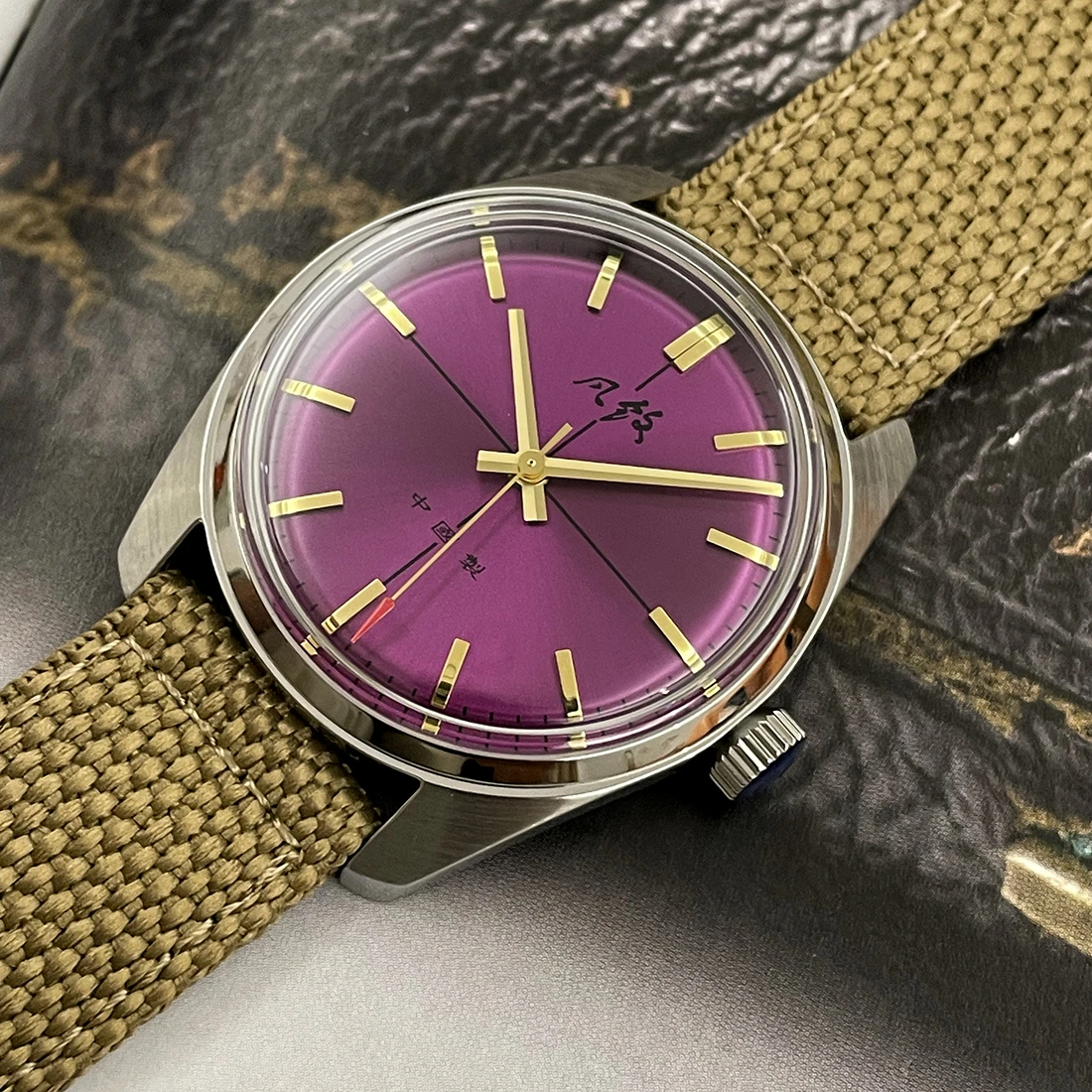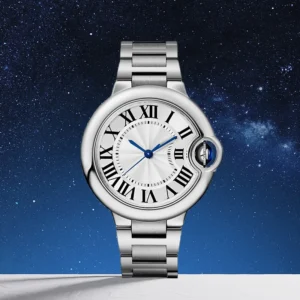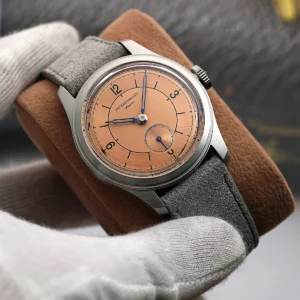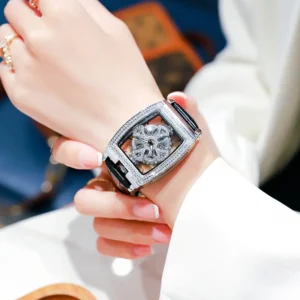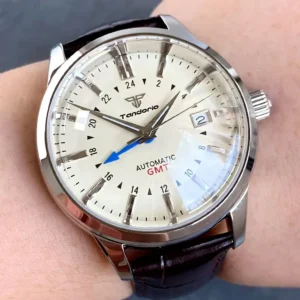Introduction: The Essence of Simplicity in Timekeeping
In the world of horology, minimalist design isn’t simply about absence—it’s about intentional restraint that highlights what truly matters. Minimalist dress watches represent the perfect marriage of form and function, where every element serves a purpose and nothing exists without reason. These timepieces have evolved from utilitarian tools to sophisticated accessories that speak volumes through their refined simplicity.
The enduring appeal of minimalist watches lies in their versatility, elegance, and timelessness. Unlike watches that follow fleeting trends, a well-designed minimalist timepiece transcends fashion cycles, becoming a perpetual companion for years—even decades—to come. This quality aligns perfectly with Sharp Aspect’s philosophy of “Time. Precision. Heritage,” where lasting value and purposeful design take precedence.
In this comprehensive guide, we’ll explore what truly defines minimalism in modern dress watches, from dial design to movement selection, helping you understand the subtle details that separate thoughtful minimalism from mere simplicity. The principles found in classic vs minimalist dress watches reveal how different approaches to design create distinctly different timepieces, even when serving the same essential function.
The Philosophy Behind Minimalist Watch Design
“Less is more”—this principle, popularized by architect Ludwig Mies van der Rohe, forms the philosophical foundation of minimalist watch design. It’s not about creating something plain, but rather distilling a design to its essential elements, where nothing can be removed without diminishing the whole.
The Bauhaus school of design, with its emphasis on “form follows function,” has profoundly influenced modern watchmaking. This approach celebrates the inherent beauty of purposeful design, where every element serves both aesthetic and functional roles. The result is timepieces where legibility and usability take precedence, yet beauty emerges naturally from this disciplined approach.
Minimalism differs fundamentally from simplistic design. The former represents intentional reduction—a sophisticated exercise in restraint—while the latter might simply lack detail or thought. True minimalist watches require more design consideration, not less, as each element must be perfectly proportioned and placed.
This restraint actually enhances our appreciation of craftsmanship. When a dial isn’t cluttered with unnecessary elements, we notice the perfect alignment of hands, the precise application of hour markers, and the subtle interplay of textures. The elegance of minimalist dress watch design lies in these refined details that reveal themselves gradually to the discerning eye.
Essential Elements of a Minimalist Dress Watch Dial
The dial of a minimalist dress watch serves as its defining visual statement, where restraint creates impact. At its core is the thoughtful use of negative space—the empty areas that give the design room to breathe and create visual balance. This isn’t emptiness for its own sake, but rather a carefully considered canvas where each element gains prominence.
Index styles commonly found in minimalist watches include:
- Simple stick markers that provide clean, precise reference points
- Subtle dot indices that offer orientation without visual weight
- Minimalist Arabic or Roman numerals, often applied sparingly at key positions
- Mixed index styles that create subtle visual rhythm without complexity
Hand designs play a crucial role in maintaining minimalist elegance. Leaf hands with their gentle taper, straight baton hands, or classic dauphine hands with their faceted surfaces all complement the minimalist aesthetic through their clean lines and functional clarity.
Color choices typically embrace restraint, with monochromatic schemes dominating. White, black, silver, and champagne dials create a timeless foundation, sometimes enhanced by subtle sunburst finishes that add depth without complexity. The interplay of different visual styles in mechanical watches shows how minimalism represents a deliberate aesthetic choice rather than a limitation.
Typography in minimalist watches deserves special attention. Fonts are chosen for clarity and timelessness, with serifs often eliminated in favor of clean sans-serif typefaces. Even the placement of brand names and other text is carefully considered, often reduced in size and positioned to maintain visual harmony.
For those seeking the ultimate expression of this philosophy, our collection of thin automatic dress watches showcases how slender profiles contribute to the minimalist ethos.
Case Design: The Framework of Minimalist Elegance
The case of a minimalist dress watch acts as the crucial framework that houses the timepiece while establishing its visual presence. Profile considerations—particularly slimness—are paramount in minimalist dress watch design. The ideal thickness typically falls between 7-10mm, allowing the watch to slide effortlessly under a shirt cuff while maintaining a refined presence.
While round cases dominate the category, other shapes can equally embody minimalist principles:
- Rectangular cases with clean, straight lines
- Cushion cases with subtle, flowing curves
- Tonneau (barrel) shapes that provide visual interest through form alone
The relationship between case size and dial proportions creates visual harmony in minimalist watches. The optimal balance often features a thin bezel that maximizes dial space while maintaining structural integrity. This approach creates a seamless visual flow from case to dial.
Lug design in minimalist watches tends toward integration with the case, creating fluid lines rather than abrupt transitions. This cohesive approach reduces visual complexity while enhancing comfort. Similarly, crown design focuses on functionality without visual intrusion—often kept small and positioned for easy access without disrupting the case profile.
Current case size trends in dress watches show a move toward moderate dimensions that respect proportion and wearability over sheer presence, aligning perfectly with minimalist principles.
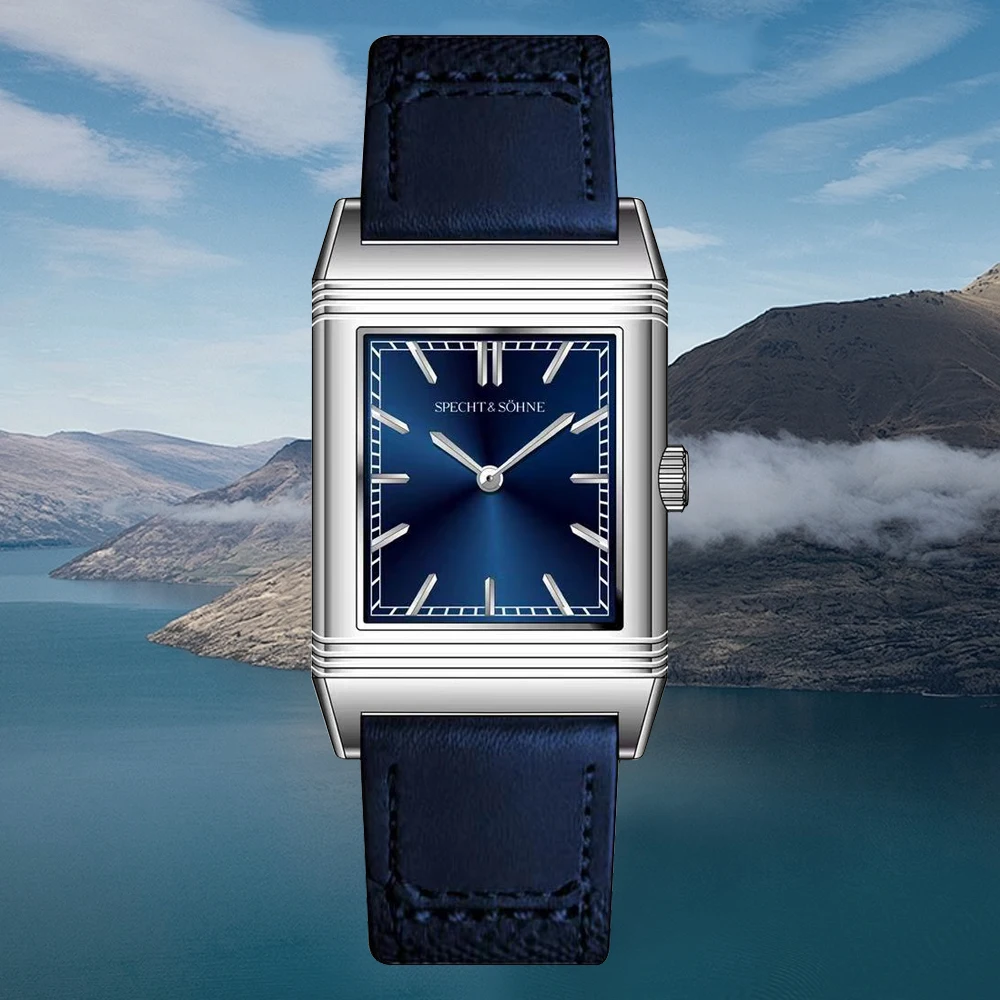
Materials and Finishes: Subtle Expressions of Quality
Material selection significantly influences a minimalist watch’s character while reflecting its quality standards. Each material brings distinct properties that either enhance or detract from minimalist principles:
| Material | Visual Characteristics | Minimalist Application |
|---|---|---|
| Stainless Steel | Versatile, easily finished | Most common; allows focus on design rather than material |
| Titanium | Matte appearance, lightweight | Creates subtle presence through reduced visual weight |
| Gold | Warm luster, inherent value | Used sparingly to maintain minimalist ethos |
| Ceramic | Consistent color, modern | Provides pure color blocks without visual noise |
Finishing techniques create subtle differentiation in minimalist designs. Polishing brings a mirror-like reflection that catches the eye, while brushing creates a softer, more utilitarian appearance. The strategic combination of these finishes—such as brushed case sides with polished bezels—creates visual interest through contrast rather than ornamentation.
The interplay of light with these finishes adds another dimension to minimalist watches. Flat polished surfaces create dramatic reflections, while angled faces and brushed areas diffuse light more gently. This interaction with ambient light gives minimalist watches a dynamic quality despite their restrained design.
Our automatic dress watches collection showcases how different material choices can express minimalist principles while maintaining distinctive character.
Movement Considerations: The Hidden Dimension of Minimalism
Though unseen during regular wear, a watch’s movement profoundly impacts its minimalist credentials. Movement selection directly influences case thickness—one of the most important aspects of minimalist design. Ultra-thin movements like the ETA 2892, Piaget Altiplano, or various Jaeger-LeCoultre calibers enable the slender profiles that minimalist aesthetics demand.
The movement type creates interesting philosophical considerations in minimalist watches:
- Quartz movements offer the ultimate functional minimalism—accurate, thin, and maintenance-free
- Manual-wind mechanical movements eliminate the automatic rotor, allowing for thinner cases while maintaining horological tradition
- Automatic movements balance convenience with the mechanical authenticity prized by enthusiasts
Many watch collectors find that mechanical movements align naturally with minimalist philosophy. Both celebrate essential engineering where every component serves a purpose, with nothing superfluous included. This connection between exterior simplicity and internal mechanical elegance creates a compelling harmony.
Exhibition casebacks present an interesting counterpoint to dial-side minimalism. While the front may embrace restraint, the reverse often reveals intricate mechanical beauty. This juxtaposition celebrates both design approaches—external simplicity with internal complexity—creating a richer appreciation of the timepiece.
Our manual wind dress watches collection exemplifies how this traditional winding mechanism enables some of the thinnest and most elegant minimalist designs available.
Straps and Bracelets: Completing the Minimalist Vision
The strap or bracelet of a minimalist dress watch serves as both functional component and design extension. Material selection significantly impacts the overall aesthetic:
- Fine leather straps with minimal stitching maintain clean lines while adding warmth
- Milanese mesh bracelets provide flexible comfort with uninterrupted visual flow
- Simple link bracelets with minimal decoration extend the case aesthetic
- Fabric options like perlon offer textural interest without visual complexity
Design elements like stitching, taper, and texture require careful consideration in minimalist watches. The ideal approach features subtle stitching in matching thread colors, gentle tapering that follows the wrist’s contours, and restrained texturing that adds depth without distraction.
Attachment methods play a surprisingly important role in minimalist design. Hidden spring bars create cleaner case-to-strap transitions, while integrated designs eliminate the visual break entirely. These details may seem minor, but they significantly impact the cohesive appearance that minimalism demands.
The classic minimalist watch styling guide explores how different strap choices can transform the character of a minimalist watch while maintaining its essential design principles.

The Delicate Balance: Functionality vs. Visual Purity
Minimalist watch design constantly navigates the tension between functionality and visual restraint. This balance raises important questions: What features are truly essential? Which complications can be integrated while maintaining minimalist principles?
Date displays represent the most common additional function in minimalist watches. When thoughtfully executed—such as small date windows with matching date wheels or discrete pointers indicating dates around the perimeter—they add functionality without compromising visual harmony.
Other complications require even more careful integration:
- Small seconds subdials can maintain minimalist principles when executed with restraint
- Power reserve indicators can work if designed as subtle, integrated elements
- Moonphase displays, despite their complexity, can align with minimalism when reduced to essential forms
The key lies in integration rather than addition. When complications appear to be natural extensions of the core design rather than afterthoughts, they can enhance rather than detract from minimalist principles. Understanding various watch features helps appreciate how different functions can be incorporated while respecting minimalist design philosophy.
Iconic Exemplars: Modern Minimalist Dress Watches
The minimalist watch landscape features several distinctive interpretations that demonstrate different approaches to the philosophy:
Scandinavian Minimalism:
– Characterized by extreme simplicity and clean geometric forms
– Often features matte dials with the absolute minimum of markings
– Typically employs monochromatic color schemes
– Emphasizes functional clarity above all else
Bauhaus-Inspired:
– Incorporates precise geometric elements and balanced proportions
– Often features slim numerals and fine concentric circles
– Employs contrast for functional clarity (black hands on white dials)
– Celebrates industrial modernism while maintaining elegance
Japanese Minimalism:
– Embraces negative space and asymmetry
– Often features textured dials inspired by natural elements
– Balances restraint with subtle organic elements
– Focuses on material quality and perfect execution
Swiss Traditional Minimalism:
– Emphasizes exceptional finishing and subtle details
– Often incorporates applied markers and finely crafted hands
– Balances minimalist principles with traditional luxury cues
– Focuses on proportional harmony and refined execution
Our classic automatic dress watches collection includes exceptional examples that demonstrate how these different interpretations can be executed with outstanding craftsmanship.
Classic Automatic Dress Watches, Day Date Automatic Watches, Perpetual Calendar Automatic Watches
Price range: $540.60 through $574.60 Select options This product has multiple variants. The options may be chosen on the product pageClassic Automatic Dress Watches, GMT Automatic Watches, GMT Pilot Watches
Price range: $1,240.86 through $1,463.33 Select options This product has multiple variants. The options may be chosen on the product pageClassic Automatic Dress Watches, Thin Automatic Dress Watches
$437.64 Select options This product has multiple variants. The options may be chosen on the product pageClassic Manual Wind Watches, Manual Wind Dress Watches
Price range: $425.50 through $462.50 Select options This product has multiple variants. The options may be chosen on the product page- $104.12 Select options This product has multiple variants. The options may be chosen on the product page
Classic Automatic Dress Watches, GMT Automatic Watches, GMT Dive Watches
Price range: $468.93 through $552.94 Select options This product has multiple variants. The options may be chosen on the product page
How to Choose Your Minimalist Dress Watch
Selecting the ideal minimalist dress watch requires consideration of both aesthetic and practical factors. The following considerations will guide your selection:
Finding Your Ideal Case Size
– Measure your wrist circumference for reference
– Consider proportions rather than absolute numbers—38-40mm suits most wrists
– Remember that minimalist watches often wear larger due to dial-heavy designs
– Consider case thickness as equally important to diameter
Evaluating Legibility
– Ensure sufficient contrast between hands and dial
– Look for adequate length in hands (minute hand should reach minute track)
– Consider how the watch appears in different lighting conditions
– Remember that extreme minimalism can sometimes compromise readability
Material Selection
– Choose based on both aesthetic preference and practical concerns
– Consider weight preferences (steel is substantial, titanium is lighter)
– Think about patina development (some materials age more visibly)
– Match to your typical attire and other accessories
The comprehensive guide to dress watch features provides additional insights to help make an informed decision aligned with your personal preferences.
Minimalist Watch Styling: Versatility Across Occasions
Minimalist dress watches excel in versatility, transitioning effortlessly between formal and casual contexts. For formal settings, pair a thin minimalist watch with classic business or evening attire—the restrained design complements rather than competes with formal clothing. The absence of flashy elements makes minimalist watches particularly appropriate for professional environments.
In business settings, minimalist watches communicate subtle sophistication and attention to detail. Their understated presence suggests confidence without ostentation—the hallmark of true professional style.
For casual wear, minimalist watches provide an elegant counterpoint to more relaxed attire. They elevate simple outfits without creating formality conflicts, making them ideal weekend companions. This versatility makes minimalist watches excellent daily wear options, as explored in the comparison between dress and casual watches.
Strap changes dramatically transform minimalist watches, extending their versatility:
– Black leather creates formal elegance
– Brown leather warms the aesthetic for business-casual settings
– Canvas or perlon straps create a relaxed summer look
– Metal mesh bracelets add sophisticated modernism
This adaptability makes minimalist watches particularly economical investments despite their initial cost—one watch serves many style contexts when thoughtfully paired.

Can a Watch Be Too Minimal? Examining the Extremes
While minimalism celebrates restraint, watches can indeed cross the threshold into excessive simplicity. “Ultra-minimalist” watches that eliminate all markers and differentiation between hands may sacrifice the primary function of accurate time-telling for aesthetic purity. This creates an interesting question: at what point does minimalism undermine functionality?
Several potential drawbacks emerge from extreme minimalism:
- Legibility issues when contrast is insufficient or hands are indistinguishable
- Identity challenges when designs become so reduced they appear generic
- Character limitations when all personality is removed from the design
- Orientation problems when reference points are eliminated
The most successful minimalist watches maintain distinctive character despite their restraint. This might come through subtle signature elements—a distinctive hand shape, a uniquely proportioned case, or a characteristic font. These elements create identity without compromising minimalist principles.
The comparison between minimalist and classic dress watches reveals that the most enduring designs find balance between clean aesthetics and distinctive character. They demonstrate that “less is more” works best when what remains is exceptionally well-considered.
Is a Minimalist Dress Watch Right for You?
Do you value versatility in your accessories?
Minimalist watches transition seamlessly between formal and casual settings, making them excellent investments for versatile wardrobes.
Do you appreciate subtle details rather than bold statements?
Minimalist watches reward close inspection—their quality reveals itself through perfect proportions and fine finishing rather than obvious decorative elements.
Do you prefer timeless design over trending styles?
Minimalist watches typically remain relevant despite changing fashion trends, making them long-term companions rather than seasonal accessories.
Do you find yourself drawn to clean, uncluttered spaces and objects?
Your preference for environmental minimalism likely extends to personal accessories, making minimalist watches a natural fit.
Do you wear formal or business attire regularly?
Minimalist watches particularly complement tailored clothing, where restrained elegance is prized.
Many who initially question whether a minimalist watch offers enough presence discover that its subtle sophistication actually attracts more meaningful attention than overtly decorated alternatives. Our collection of square and rectangular automatic watches demonstrates how distinctive case shapes can create character while maintaining minimalist principles.
The Future of Minimalist Watch Design
Minimalist watch design continues to evolve while honoring its core principles. New manufacturing techniques enable previously impossible forms, like impossibly thin ceramic components and seamlessly integrated case elements. These advancements allow designers to pursue minimalist ideals with fewer technical constraints.
Material science developments particularly influence minimalist possibilities. New alloys, composites, and surface treatments create subtle visual effects that add depth without complexity. Similarly, advancements in dial manufacturing enable minimalist designs with remarkable textural nuance.
Perhaps most significantly, minimalist watches remain relevant—even ascendant—in an age of digital overload. As smartwatches deliver constant notifications and information, traditional minimalist timepieces offer a counterbalancing experience: singular purpose and visual calm.
The enduring appeal of minimalist watches suggests that regardless of technological developments, there will always be appreciation for objects that do one thing perfectly, with intention and restraint. In a world of increasing complexity, the minimalist watch stands as a reminder that sometimes, less truly is more.

